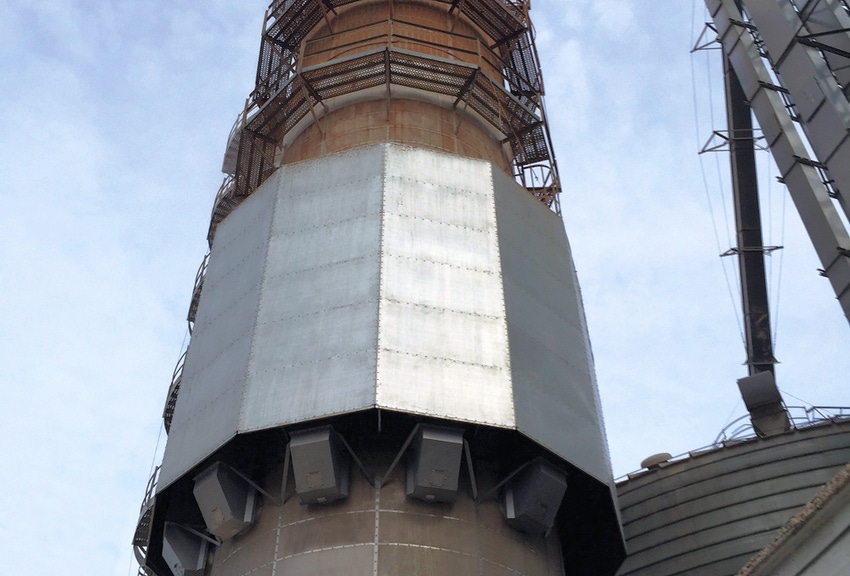October 13, 2016

Grain dryers are great tools designed to help you capture a top-yielding crop, and bring its moisture down to a level for long-term storage. Simple enough, but that same machine can also use a lot of energy. Engineers have long sought ways to minimze energy use in these machines with the use of heat reclaimers, but they've been problematic. Until now.
Engineers from Agco's GSI have come up with a new heat reclamation system developed in partnership with the Propane Education & Research Council the company claims can save up to 30% of propane at 32 degress F during drying season.
"We had a soft introduction with limited distribution last winter - we put out no more than five or six," says Gary Woodruff, who works in research and development, and also manages a sales territory in Indiana and Kentucky. However, he adds that none of those units have yet to fire up as they're in northern Indiana and farther north. "It's a little unusual but follows the harvest being behind the 5-year average," he adds.
For three prototypes, in the field during development, GSI found out plenty, but first what is the new system? GSI has come up with a heat reclamation system for tower dryers. Heat reclamation systems aren't new, the company has even tried it in the past, but the challenge is that heat coming off a dryer is often wet and bees-wings filled.
"That can force you to clean a dryer almost daily," Woodruff recalls. So what is the new system and why is it different?
Rethinking airflow
Jarod Wendt, engineering manager, GSI, explains that the company actually had a reclaimer a few years ago it scrapped due to those problems with wet air and dirt and debris clogging the dryer. The new system approaches the challenge differently.
"The system we have patented features ducts that capture air that's hot and dry at the top of the dryer, rather than the bottom," he says. "That heat is recirculated into the system and carries very little bees wings or other fines."
The system can also be retrofitted to older dryers of the Zimmerman style, built since 2001. "That's what interested us in the system and one reason we gave GSI a grant for its development," says Cinch Munson, director of agriculture business development, PERC. "We work with companies to develop new equipment or upgrade older equipment that uses propane efficiently in new ways."
PERC, which is funded by checkoff money from propane sales, works on a wide variety of programs that promote research on propane use. In this case, the association actually promotes a system that uses less propane, which seems counterintuitive.
"At the end of the way, as a propane industry, and as individual propane marketers, we are only as successful as our customers are," Munson says. "Efficiency is important for the profitability of an ag operation." Propane-powered equipment competes with other energy sources, so if making dryers more efficient gets customers to consider propane, that's a good thing.
PERC granted GSI $400,000 for development cost for the heat reclaimer. And it can offer significant savings for dryer operation. "Depending on where you are," says GSI engineer Wendt, "and what time of year you're drying the savings can be higher." In essence the farther north you are and the colder it is, the greater the impact of the system. For example, in Wisconsin last winter, the system saw a 33% savings in a prototype test in the coldest conditions where it operates.
As for payback? "We ran quite a few scenarios and right now it takes two to three years at today's propane prices for the system to pay for itself," says Wendt. "If propane prices go up, the payback will be quicker."
The system is available on a limited basis for 2016, and will be fully introduced in spring of 2017. Learn more at grainsystems.com.
About the Author(s)
You May Also Like






